Auriea Harvey & Jacolby Satterwhite
Two artists discuss video games, virtual worlds, and how their training in painting and sculpture shapes their work in digital media.
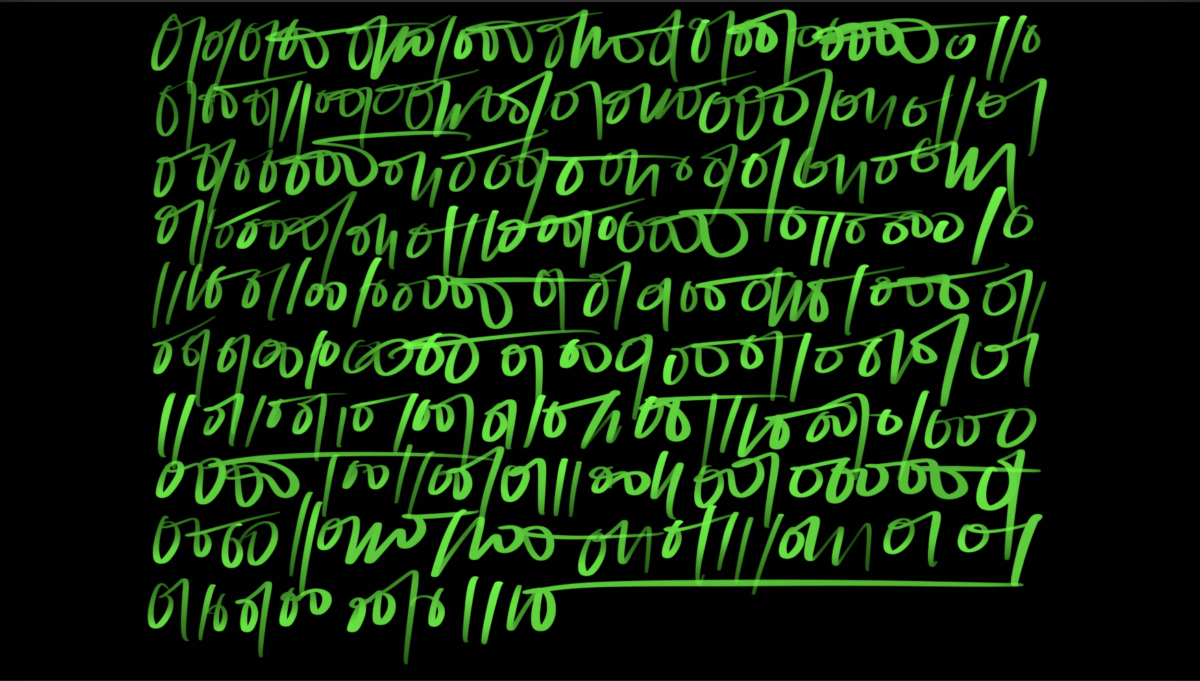
The boundary between text and image has always been a porous one—from early pictographic writing systems to ASCII art on the blockchain. It’s unsurprising, then, that many visual artists have used written or verbal language as a medium in their work. As technologies have evolved, so too have the ways in which text and language are generated. How do algorithms, blockchains, and artificial intelligence expand the possibilities for artists working with words and sentences as well as individual letters, numbers, and other symbols? The poet and artist Sasha Stiles has been exploring this question through her long-term writing collaboration with an AI alter-ego. Her (and sometimes the AI’s) other outputs include paintings, NFTs, and theVERSEverse, a poetry NFT gallery that Stiles co-founded in 2021. Both Stiles and theVERSEverse participated in this month’s Refraction x Proof of People event during NFT.NYC. Emily Edelman trained as a graphic designer, and she brings her in-depth understanding of typography to bear on her artwork, which ranges from hand-drawn to algorithmically rendered compositions. Her collection Agar was presented in a gallery exhibition last week by Bright Moments. Outland brought the two artists together for a conversation about their influences, the relationship between legibility and abstraction, and the question of whether technology is a tool or a medium in art.
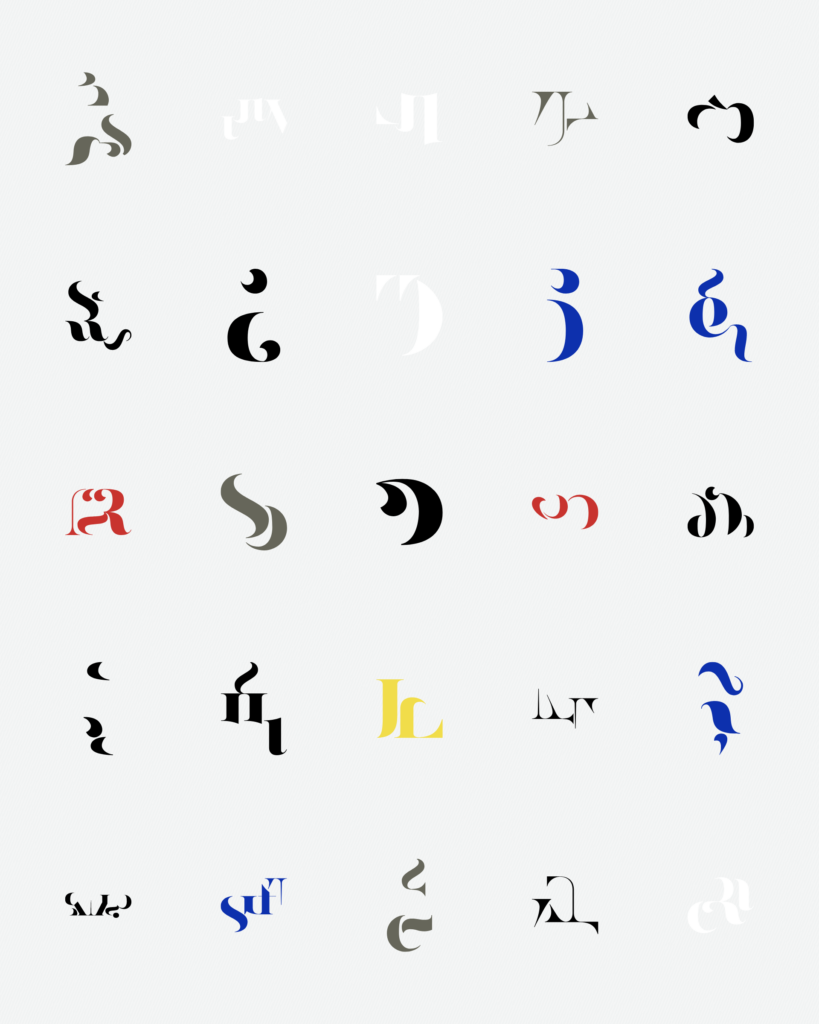
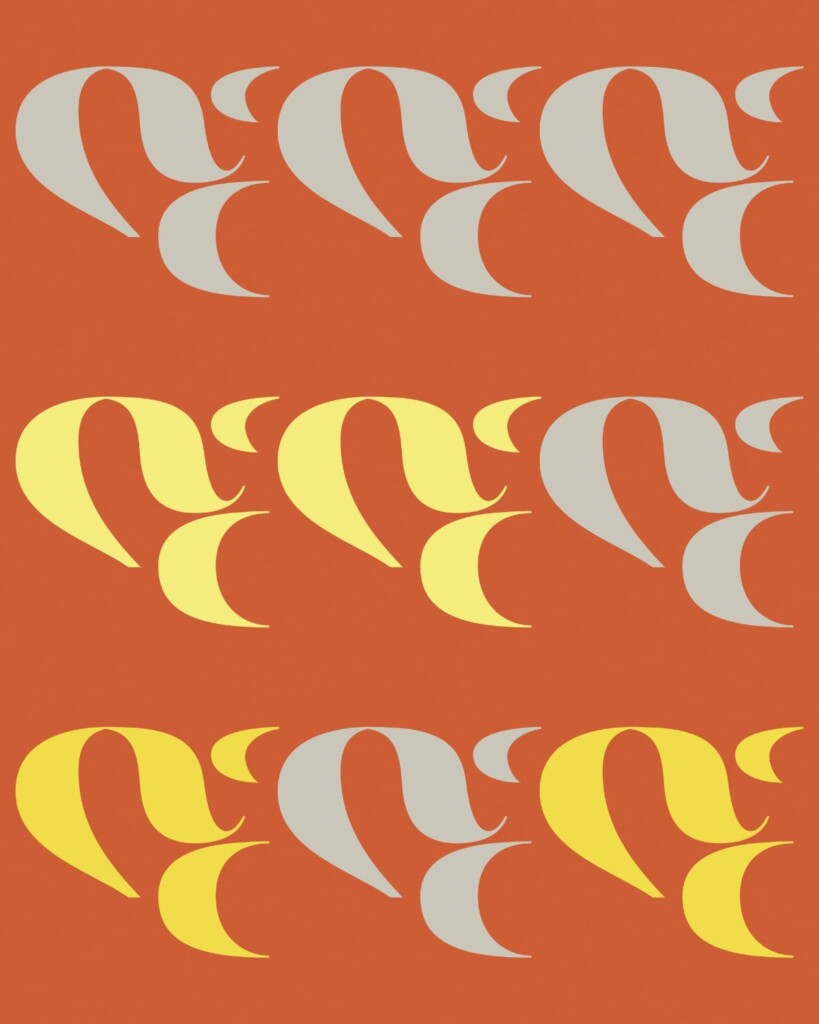

SASHA STILES As long as I can remember I’ve been writing poetry as an art form as well as a form of research, a place to work out my questions and preoccupations. I also have a lifelong interest in science and technology. My parents are both documentary filmmakers and a lot of their work has to do with space exploration and big ideas, and I’d tag along with them to the Jet Propulsion Lab or the Planetary Society. I grew up adoring thinkers like Carl Sagan, who understood that poetry is science and science is poetry.
My writing tends to be focused on how advancing technology is changing what it means to be human. A lot of the themes that are important to me are about using technology to experience the world in new ways. So I became interested in thinking about how I could share poetry in ways that felt more like an embodiment of the themes that I was writing about, rather than shoe-horning them into conventional approaches. That’s what led me to start experimenting with digital tools and natural language processing.
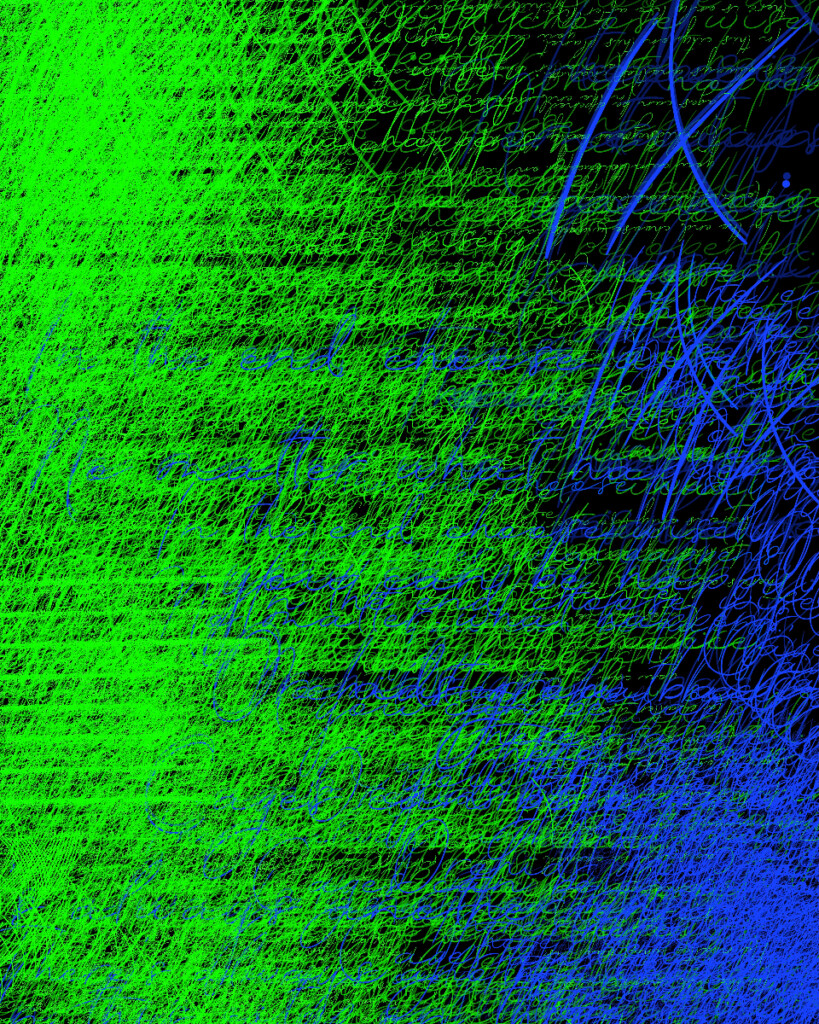
EMILY EDELMAN I studied graphic design in college—a huge part of that was typography. To me, the coolest thing about typography is that it’s function-led. It’s all about legibility, so the formal possibilities in type come out of an extremely technical need. Earlier in my career, I worked in spatial and experiential design. I have also bound books, made jewelry, blown glass, and worked in package design. All of these fields have functional constraints and I find a lot of creative potential in that.
When I left my event and experiential design job to pursue art full time, I was drawn right back to typography and sought to disrupt its function, playing with legibility and abstraction. Generative art allows for the pushing and abstracting of ideas, and technology in general—whether it’s the wheel or the printing press or the blockchain—continues its evolving relationship with text.
STILES If I had the chance to go back and do it again, I would love to study graphic design. I have so much admiration for people who are able to take ideas and create more impactful ways of expressing them. It’s so apparent how the layout of a piece of text or the typeface used, or the color of the paper or the ink, can mean so many different things and hold so many different emotions. I think that’s one reason why I’ve always been drawn to text-based work, by artists like Jenny Holzer and Bruce Nauman and Cy Twombly. The default in contemporary poetry has just been to use Times New Roman, size 12, black text on white—in fact, that’s specifically what many poetry journals request when you send in submission packets.
There is, of course, a long history of word as image and vice versa: hieroglyphics, medieval illuminated manuscripts, calligraphy. Letter symbols are rooted in pictures. It’s fascinating to me that the work we’re both doing with text feels like it’s moving forward, challenging the status quo, and at the same time refers right back to the origins of language. It’s the same with technology: the more we move forward, the more we realize how much it’s always been part of human history.
EDELMAN We’re inventors. Humans are always inventing and improving our tools. I love the artists you mentioned; I also look at Robert Indiana, for example, as someone who makes objects out of typography, transforming it into symbolism and changing our relationship to legibility. Other references for my work are books on design and typographic principles. Examples are A Type Primer (2002) by John Kane and Explorations in Typography (2011) by Carolina De Bartolo. In typography, there’s an established set of rules that I think are important to understand so you can break them carefully. My first long-form generative project, Asemica (2021), is very much inspired by formal typographic rules—for instance, we made sure there were no widows, which are single lines of text at the top of a column—but it breaks the rule of legibility. You can’t read the script at all: it just evokes a feeling. It becomes, like an illuminated manuscript in an alphabet you don’t understand, more of an image or illustration.
I worked on Asemica with two programming partners, Dima Ofman and Andrew Badr. I wrote the whole algorithm in English: it was a text-heavy flowchart that, if printed, would be ten feet tall. There wasn’t a lot of room in the actual medium, in the code, to make mistakes and go in a new direction because of the mistakes—so there was the tight control of classic typography. I didn’t realize at that time how unusual an introduction to programming this was. But then I’ve also heard people say that English is the new programming language because of how you can interact with an AI using English to produce a piece of code.
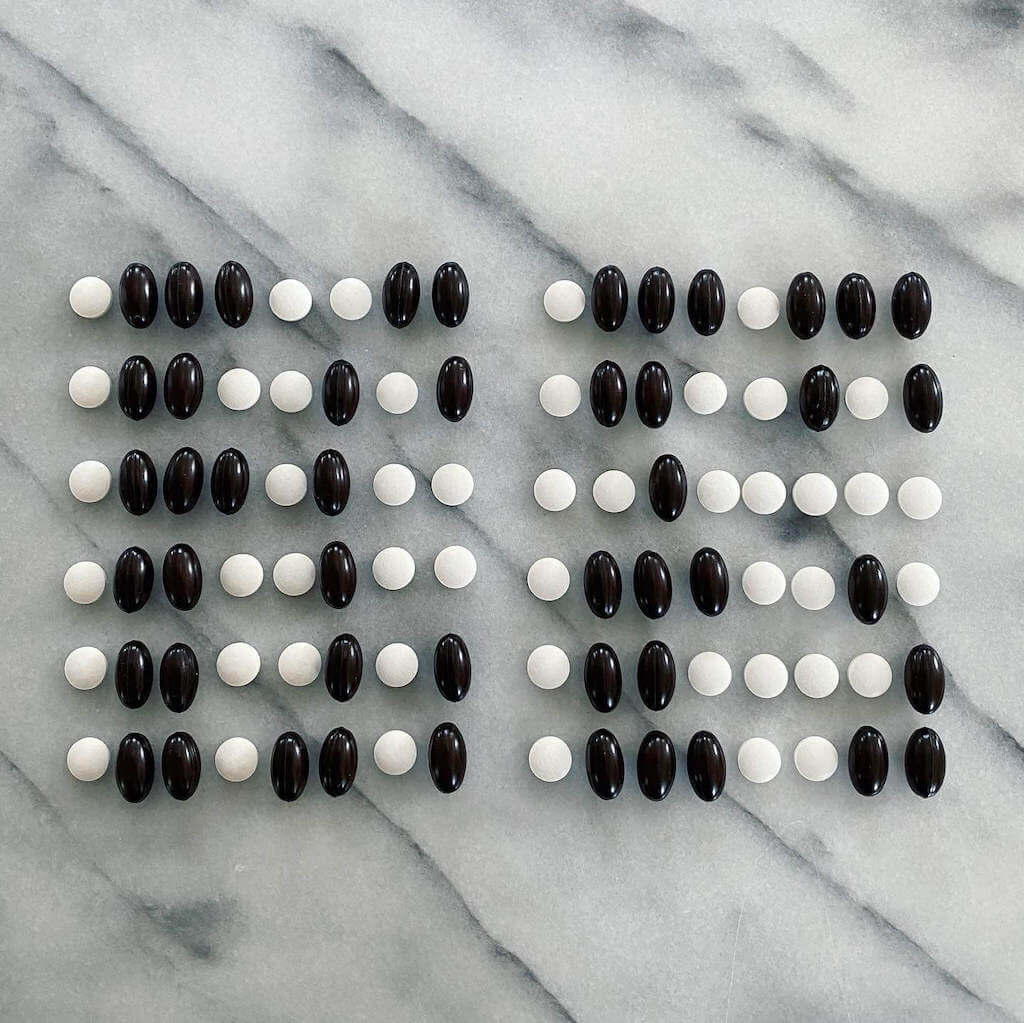
STILES Asemica is one of my favorite NFTs that I own! And some of my projects that I’ve enjoyed working on the most have to do with fonts or type. For example, I do a lot of work with binary code, which is semi-asemic in a way, because most of us don’t know how to read it. There is some semantic content but it’s not immediately decipherable—especially when I take binary code out of the visual language of computer fonts and do it in handwriting, as in “Cursive Binary,” or through fruits and vegetables, like I’ve done in my “Analog Binary Code” series. I think there’s a similar impulse to play around with the kind of tension between legibility and wordlessness.
Throughout the history of literature there have been movements that were interested in mechanical processes, automation and aleatory writing, using specific rules and elements of chance to liberate the writer from authorial inhibitions and tap something deeper—potentially truer and more essential. I think a lot about people like the Dadaists and Surrealists and the Beat poets. Someone who always comes to mind is the Fluxus poet Alison Knowles, who is often credited with writing the first computer-generated poem and who has been a profound influence on my work. In 1967 she collaborated with James Tenney on “The House of Dust,” which takes the format of a quatrain with words and phrases randomly drawn from four different lists.
Early on in my encounters with AI, I felt similar forces at work. In 2018, I had a chance to meet a humanoid robot named Bina48 built by Hanson Robotics as an experiment in digital immortality. They hypothesized that it might be possible to preserve something of a human personality in software and reanimate it in android form. I became her poetry mentor and began to investigate how a nonhuman mind like hers used complex associations and neural pathways to turn data points into creative expression. I also started working with GPT-2—a large language model that was the ancestor of Chat GPT and GPT-4. At that time I had been working for a couple years on an analog manuscript of poetry about what it means to be human in a posthuman age; it occurred to me that I could use AI-powered natural language processing to translate, revise and augment my own verse; and that I could even fine-tune existing language models to reflect my voice as a poet.
That became the basis for Technelegy, a book of poetry co-authored with my AI alter-ego. Technelegy is a printed physical object as well as a libretto for many NFTs and multisensory, audio-visual experiences. The project keeps evolving along with the tools that power it, and with my facility as a transhuman translator.
EDELMAN: Do you often say that you’re working in collaboration with AI, or that AI is your tool? I ask that because we don’t, for instance, say “I’m working in collaboration with Mr. BIC the pen-maker.”
STILES: It’s true. And we also don’t say, “I wrote a computer poem using Microsoft Word.” I’m not always sure how to describe my relationship with AI because it’s still so new and I’m testing different ways to use it. Sometimes it really is a genuine collaboration and I’ll have a writing session with the text generator, going back and forth, and it’s hard to say where the AI ends and I begin. Other times I use the raw text that’s generated because it surfaces something I wouldn’t ordinarily write, which says something interesting about the way the models are trained and the wider political and social climate. With Technelegy, the book isn’t something I could have written alone, but it’s not something an AI could have written on its own, either. It comes from a third voice, a third mind, a synergistic being.
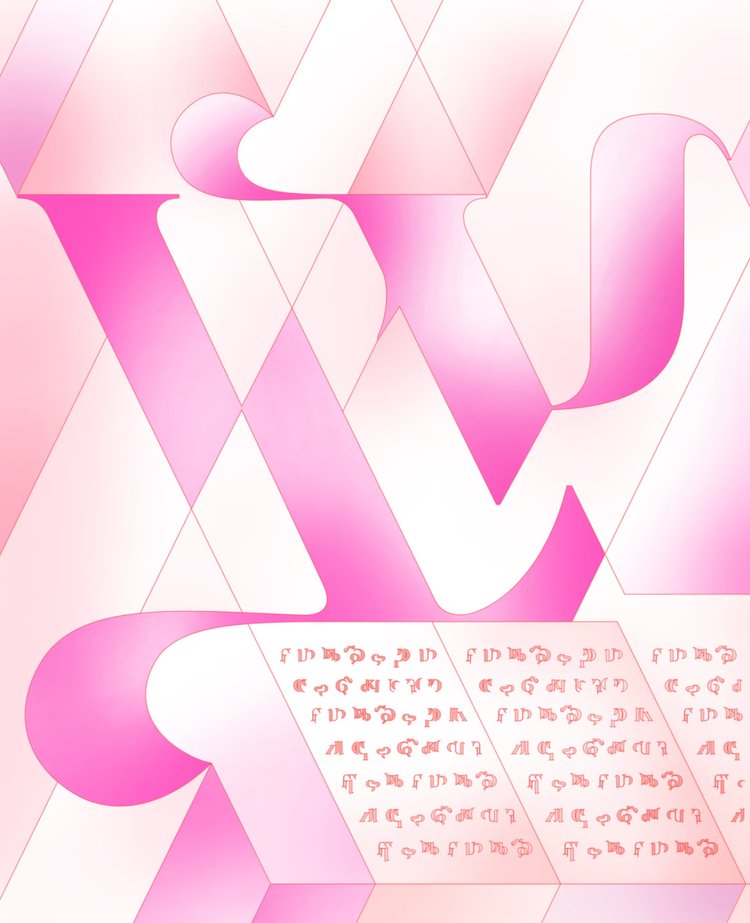
EDELMAN: I have lately been appreciating the process of hand-curating generative outputs. For me, that really changes whether the code is a medium or a tool. I think when there’s no curation in the outputs—when the minter is literally generating an image, and everyone is seeing it for the first time—the code becomes a medium, and when there is curation, it’s a tool to get to the next stage of the process.
Even when I’m not working with computer programming, I’ve always been a generative or algorithmic thinker. With Illuminated (2022), for instance, I took the characters from Asemica and made these new compositions in Illustrator. I went through the same process of working through all the different possible outputs. What are all the ways each element can dance around the page? What are all the scales, colors, textures? What are all the possibilities I can explore, so that I may accidentally find the best ones?
STILES I’m interested in the relationship between generative art and poetry. I have an ongoing project called Repetae (2022–) which is based on the idea that one of the ways that we distinguish poetry from prose or everyday speech is through repetition, whether in rhyme or rhythm—that meaning accrues through repetition. There’s something about this that really resonates with what generative artists seem to be doing, which is to take an idea and explore it over and over again, from different angles. It’s a poetic impulse.
Another thing I’ve noticed in generative art that I’d like to bring over to the literary and publishing world is the idea of being able to use blockchain as a bespoke printing press. I’m fascinated by the idea that you can print not a thousand copies of the same book but a thousand copies of the book—or poem—in which each one is different, unique, personal, rare.
EDELMAN Yes! I am so drawn to repetitive exploration. It’s a process style, really. For me, making on-chain generative art is just furthering the creative process of repetition.
STILES It’s interesting to think about NFT platforms not as marketplaces but as publishers. Without platforms like Art Blocks or fx(hash), many people who are making generative art wouldn’t be doing what they’re doing.
When I came to the blockchain as a writer at the end of 2020, there weren’t any writing platforms, really, or many other writers. Early on, Kalen Iwamoto founded the Crypto Writers group, and she and I brainstormed ways to build and support that nascent writing community. We were really looking to carve out a space for generative, experimental, and conceptual poetry and storytelling within web3. Later, we joined forces with Ana Maria Caballero to launch what became theVERSEverse—a gallery using NFTs to elevate poetry, encourage experimentation, and empower writers. It’s important to have a place where writers in web3 can talk shop, brainstorm—strength in numbers. I hope at some point soon there will be a dedicated platform or “publisher” for long-form generative text.
EDELMAN It’s great to think of generative art platforms as publishers, and I too hope there might be a text-based one soon. I wonder what this text-based publisher-platform would look like.
I’ve recently been working on another project around the number “2.” I became really obsessed with the form of the number. A long time ago, I started drawing it over and over—I loved the drama of the lines: the way it swoops over and then comes to point and then trails off. For this yet-to-be-released generative project, entitled Twos, I’m revisiting the character object I drew and using the algorithm to continue exploring this obsession, to see what the shape can do in this new setting.
STILES When I work with binary code, a lot of it is about the form of the zeroes and the ones as well. We should do a show—“0, 1, 2.”
I’ve also collaborated a few times with the artist and coder Nathaniel Stern, and we recently created an AI-generated font together. We took lots of different fonts and asked the AI to process and create a synthesis of them. We’re calling it NNFT: “Neural Network Font Type.” It’s a kind of rugged font—there are these moments where you can see how the AI has tried to understand the characters but then it’s flipped a letter around or turned it upside down. It’s interesting to see the process of how a machine mind is trying to do what you as a human artist have done.
So far, I have used the font for a few different projects and we’re planning to release it for anyone to install. It’s incredibly fun to have these new tools to play with, and it opens up a whole world of ways to manifest language.
EDELMAN It’s cool to realize you can have so much control over every decision when you’re designing a font.
There’s this lesson that comes up a lot in graphic design: if you want to communicate traveling, use a suitcase. But if it’s a shabby old suitcase it might make you think of a worn traveler who has been on many adventures. If it’s a shiny new suitcase, it evokes something different. It’s the same with text, both digital and physical. For those of us who are lucky enough to see, every visual decision communicates something.
—Moderated by Gabrielle Schwarz.
